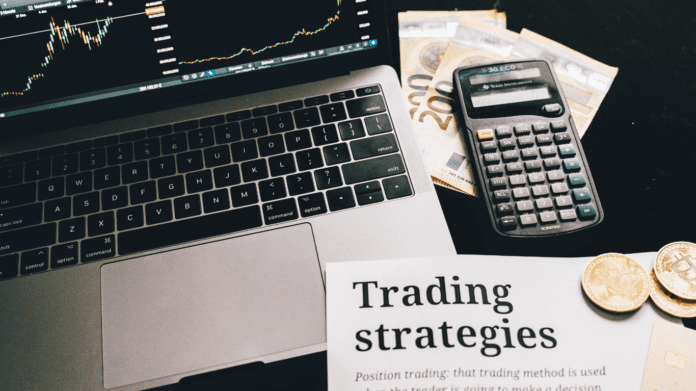Trading in financial markets can be a daunting task, especially for beginners. With so many variables to consider, it’s crucial to have a well-defined trading strategy in place. Each strategy has distinct qualities that may be customized to various trading styles and objectives. Whether you are a novice or a seasoned trader, understanding these methods will enable you to make educated judgments and optimize your financial success potential. This comprehensive guide will unveil the top 5 trading strategies successful traders use to navigate the markets. By grasping these strategies, you can enhance your likelihood of achievement and make informed decisions when trading.
The Importance of Having a Trading Strategy:
Before we delve into the specific trading strategies, it’s essential to understand why having a trading strategy is crucial. A trading strategy provides a framework that helps traders identify potential opportunities and manage risks effectively. It acts as a roadmap, guiding traders through the unpredictable nature of the markets.
Traders need to have a trading strategy in place to avoid making impulsive decisions based on emotions or market noise. This can lead to inconsistent results and significant losses. A well-defined trading strategy allows traders to approach the markets with discipline and objectivity, increasing their chances of success.
Fundamental Analysis Strategy:
One of the top trading strategies used by successful traders is fundamental analysis. This strategy analyses economic indicators, company financials, and market news to identify potential trading opportunities. By understanding the underlying factors that drive market movements, traders can make informed decisions based on value and long-term prospects.
Fundamental analysis considers interest rates, GDP growth, inflation, and company earnings. Traders use this strategy to identify undervalued assets or assets expected to outperform the market. By conducting thorough research and staying updated with relevant news, traders can gain a competitive edge in the markets.
Technical Analysis Strategy:

Another popular trading strategy is technical analysis. This strategy involves analyzing historical price patterns, chart patterns, and technological indicators to predict future price movements. Traders using technical analysis believe that historical price data contains valuable information about future market trends.
Technical analysis involves studying chart patterns, such as support and resistance levels, trend lines, and moving averages. Traders also use various technical indicators, such as the RSI MACD, to identify potential entry and exit points. By combining different technical analysis tools, traders can develop a systematic approach to trading and improve their timing of trades. However, it’s important to note that technical analysis is not foolproof and should be used in conjunction with other trading strategies.
Trend Following Strategy:
The trend-following strategy is based on the idea that markets tend to follow trends. Traders use this strategy to identify and ride trends until they show signs of reversing. Following the trend, traders can take advantage of the market momentum and potentially profit from large price movements.
Traders who use a trend-following strategy rely on technical indicators like moving averages to identify the direction the trend is headed. Once a trend is identified, traders enter positions in the direction of the trend and exit when the trend shows signs of weakening. Trend following requires patience and discipline, as trends can last for extended periods. Managing risks carefully and using appropriate position sizing to protect against potential reversals is important.
Breakout Strategy:

The breakout strategy is based on the concept that significant price movements often occur after a period of consolidation or range-bound trading. Traders use this strategy to identify breakouts from these ranges and capitalize on the subsequent price movements.
To implement the breakout strategy, traders monitor key support and resistance levels. If a price breaks above a resistance level or below a support level, it indicates a possible breakout. Traders then take positions in line with the breakout and establish appropriate stop-loss orders to control risks. Breakouts can lead to substantial profits if the price continues to move toward the breakout. However, false breakouts are common, and traders must be cautious and use proper risk management.
Range Trading Strategy:
The range trading strategy focuses on the idea that prices trade within certain ranges for extended periods. Traders use this strategy to identify these ranges and profit from their price movements. To implement the range trading strategy, traders identify key support and resistance levels that define the range. They enter positions near the support level and exit near the resistance level. This strategy requires traders to be patient and wait for clear signals within the range. Range trading is a profitable strategy in markets that lack clear trends. However, it’s important to be cautious of false breakouts and adapt the strategy to changing market conditions.
Choosing the Right Trading Strategy for You…
With so many trading strategies available, choosing the one that aligns with your trading method, risk tolerance, and time commitment is key. Consider your financial goals, preferred markets, and trading experience when selecting a trading strategy.
It’s also important to remember that no trading strategy is guaranteed to be profitable. Markets are complex and unpredictable, and strategies that work in one market condition may not work in another. It’s essential to continually monitor and adapt your trading strategy as market conditions change.
Backtesting and Refining Your Trading Strategy:
Once you have chosen a trading strategy, it’s important to backtest and refine it before risking real money. Backtesting your trading strategy includes applying it to former market data to determine how it might have performed in the past. This enables you to determine potential weaknesses and make proper adjustments.
During the backtesting process, consider factors such as the frequency of trades, the win rate, and the risk-reward ratio. Adjust your strategy as needed to improve its performance and profitability. Consider streamlining this process using trading software or platforms that offer backtesting capabilities.
Common Mistakes to Avoid:
While trading strategies can be powerful tools, it’s important to avoid common mistakes that can impair their effectiveness. Some common mistakes to avoid include:

- Over-optimizing your strategy: It’s tempting to keep tweaking your trading strategy to achieve better results. However, over-optimization can lead to curve-fitting, where the strategy performs well in historical data but fails in real-time trading.
- Neglecting risk management: Proper risk management is crucial in trading. Avoid risking too much on a single trade and use appropriate stop-loss orders to limit potential losses. Risk management controls the amount of money you are willing to lose on each trade and limits your exposure to negative market movements. You may risk too much on a single trade or not enough to generate a profit if you do not control your risk. You may also neglect to utilize stop-loss orders to safeguard your capital from unforeseen losses. Stop-loss orders automatically cancel your position when the price hits a particular level.
- Ignoring market conditions: Market conditions can change rapidly, and what works in one market environment may not work in another. Markets are complex and dynamic systems driven by various variables, including supply and demand, economic data, news events, market sentiment, and technical analysis. You may trade based on incorrect predictions or irrelevant information if you do not thoroughly grasp the markets. You may also overlook key signs or changes that improve your trading success. Stay updated with market news and adapt your strategy accordingly.
- Failing to follow your strategy: Emotions can cloud judgment and lead to impulsive decisions. It’s best to stick to your strategy and adjust as needed.
- Don’t Rush into Anything: Patience is a virtue in trading, as simple as it sounds. It allows you to wait for the right trading opportunities and avoid overtrading or chasing the market. Overtrading is when you trade too frequently or excessively, resulting in high commissions, fees, and slippage costs. Chasing the market is when you enter or exit a trade too late after the price has already moved significantly in your favour or against you, resulting in missed profits or increased losses.
- Stop Loss Orders: Stop-loss orders automatically close your position when the price reaches a certain level to protect your capital from unexpected losses. Stop-loss orders are essential for risk management, as they limit your downside and prevent you from holding on to losing trades for too long. Without stop-loss orders, you may suffer from large losses that could wipe out your account.
By avoiding these mistakes, you can get maximum results and increase your chances of success.
Conclusion – Top 5 Trading Strategies:
Having a well-defined trading strategy is essential for success in the financial markets. This comprehensive guide has explored successful traders’ top 5 trading strategies: fundamental analysis, technical analysis, trend following, breakout, and range trading. Each strategy has advantages and considerations, and choosing the one that suits your trading style and goals is important.
Remember that there is no foolproof trading strategy, and market conditions can change rapidly. Continuously monitor and adapt your trading strategy to stay ahead of the markets. Backtest and refine your strategy to improve its performance and profitability. Avoid common mistakes and stick to your strategy with discipline and objectivity.
By following these guidelines and putting in the necessary effort and practice, you can increase your chances of success in the challenging trading world.




